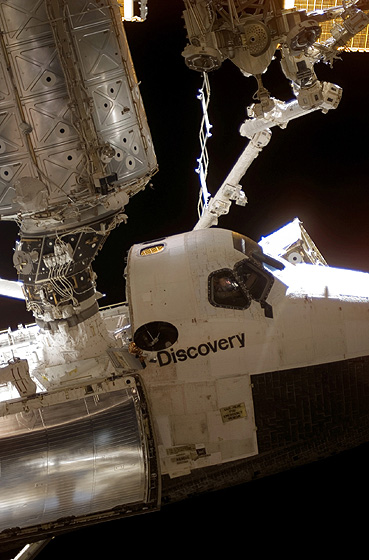The Italian Aerospace Information Web
by Aeromedia - corso Giambone 46/18 - 10135 Torino (Italy)

In the picture: Shuttle Discovery connected to the International Space Station through Node 2. (via Thales Alenia Space ISS016E006573)
(Aeromedia, November 2007)